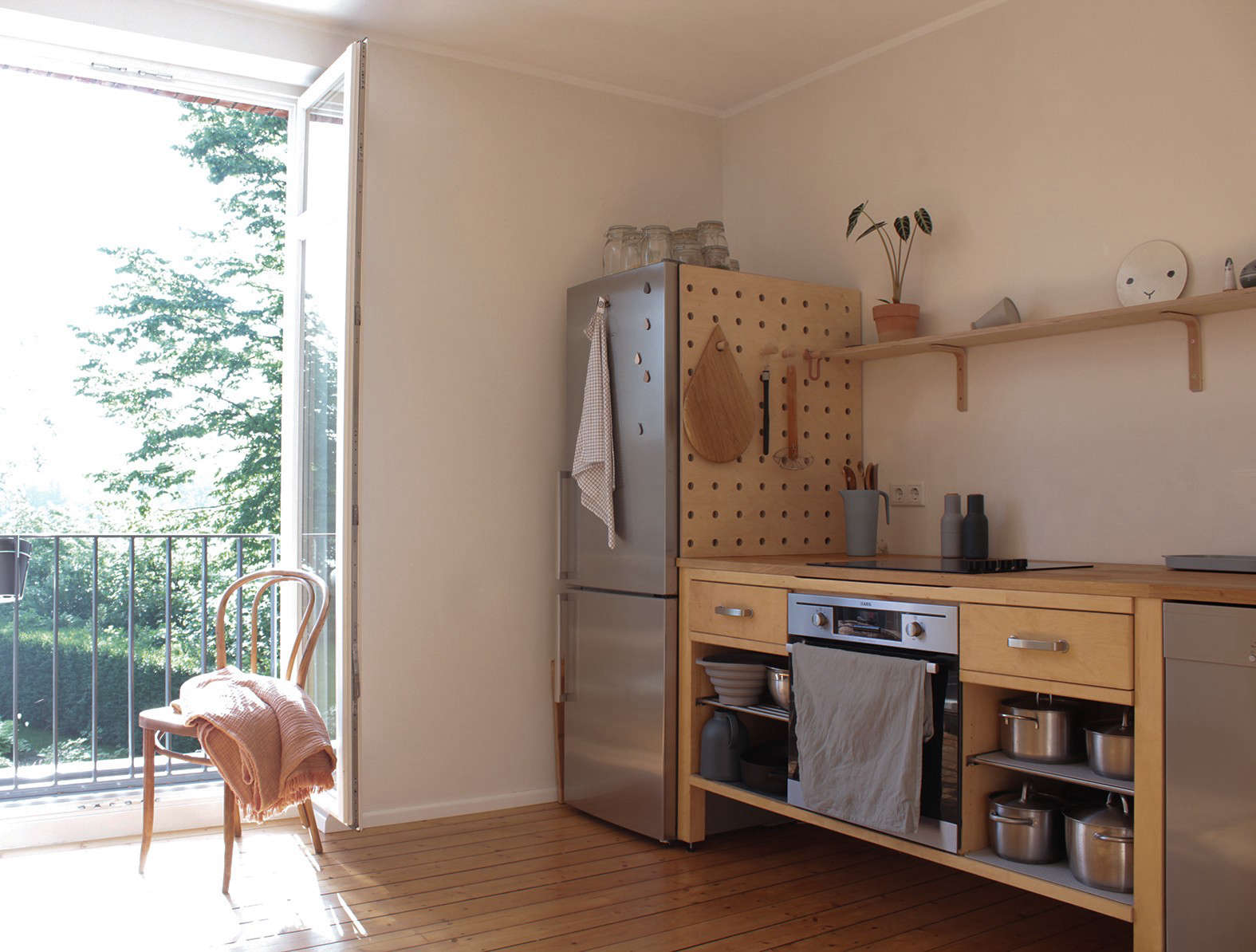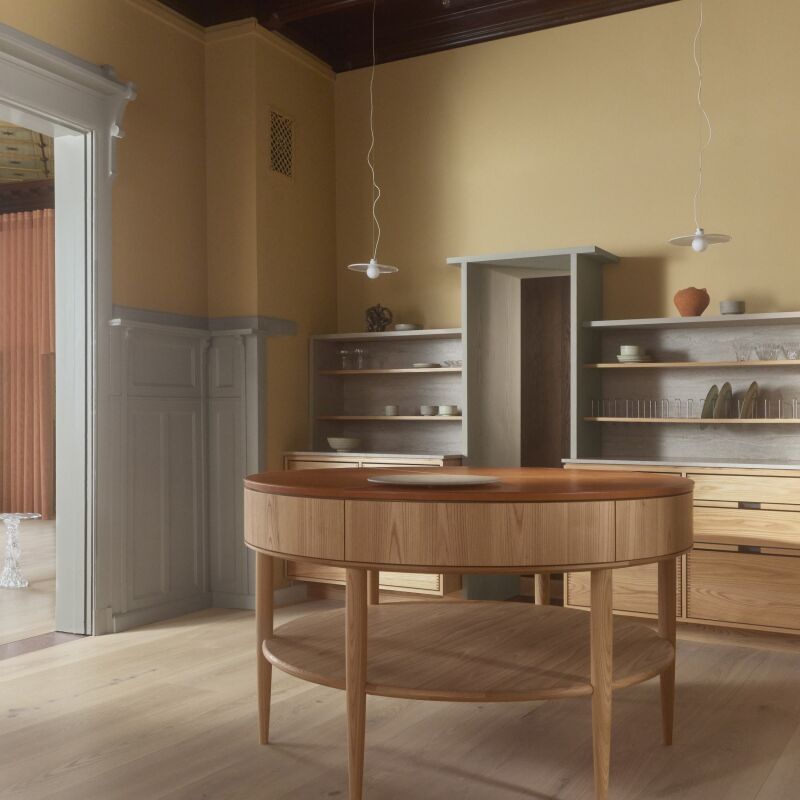A look inside a maker’s studio almost always reveals far more than the artist’s craft; often, the space surrounding a workbench has been creatively adapted. Jochen Holz’s studio in Stratford, East London, is a case in point. Here, the German-born glassmaker—whose wonky, textured pieces and sculptural neon installations can be found at The New Craftsmen and Momosan Shop (you might also recognize them from our Trend Alert on two-tone glassware)—installed Ikea base cabinets and adapted them beyond recognition to create a kitchen unlike any we’ve seen. Join us for an exclusive look inside.
Photography by Kim Lightbody.


Holz specializes in lamp working, which is a technique that transforms prefabricated borosilicate glass tubes into one-off pieces by melting the glass over a torch. The glass tubes are hardwearing and heat-resistant, which makes his unique pieces suitable for everyday use.



The work surface was made from leftover pieces of Marmoleum, glued onto a birch plywood board edged with a solid maple timber strip. (For more on Marmoleum, see Remodeling 101: Affordable and Environmentally Friendly Linoleum.)



Holz shares the studio with his partner, Attua Aparicio of Silo Studio. The couple made these hooks together, setting colored Jesmonite acrylic into glass.

Prototypes and finished pieces are displayed in the studio beneath a thriving collection of indoor plants. The items made of clear glass have been given texture and shape through pressing the molten glass against various surfaces, such as burnt wood or perforated metal. “I wanted to get away from the idea that glass is this pristine material, to give it a bit more history and edge,” explains Holz.

The colored glass collection is made using an Italian technique known as incalmo. Much like a ceramist, he builds each piece by heating and fusing together colored pieces of glass. The end product is intentionally playful. “I don’t normally do figurative work,” explains Holz, “but I had fun making these Trumps. I found the quiff worked really well.”
For more studio inspiration, see 1,000 Square Feet on a Budget: An Artist’s Loft in North London. And for more maker’s kitchens, see:
- Kitchen of the Week: A Backyard Kitchen in Berkeley, Ceramics Included
- Kitchen of the Week: A DIY Ikea Country Kitchen for Two Berlin Creatives
- Kitchen of the Week: A Hip, Low-Key Kitchen in Topanga Canyon
N.B.: This post is an update; the original story ran on September 27, 2018.




Have a Question or Comment About This Post?
Join the conversation (1)